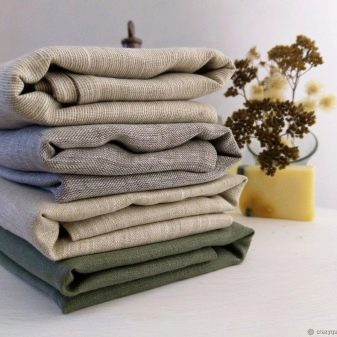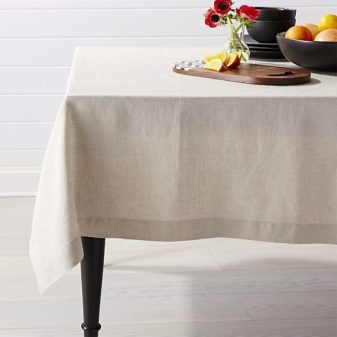All about linen tablecloths

Linen tablecloths are universal - they are used as everyday or festive table linen, they are used to decorate tables in banquet halls. Such textiles are made in different designs, colors and sizes - each of these parameters must be taken into account when choosing.
Peculiarities
Linen for the production of textiles is most often obtained by plain weaving of natural threads - by alternating them in a checkerboard pattern. With this method, the front and back sides of the fabric are equally smooth.
Tablecloths made of natural linen are reliable and durable - subject to the rules of use and care, they will retain their impeccable appearance for several years.

Other benefits.
- Environmental friendliness. In the manufacture of table textiles, manufacturers do not use synthetic components. The result is hypoallergenic table linen that does not emit harsh unpleasant odors and does not become electrified.
- UV resistance - even when exposed to sunlight, the tablecloth will not fade and retain the factory brightness of colors.
- Durability. Linen fabrics retain their appearance and consumer properties up to 300 wash cycles (while colored products do not fade, and snow-white ones do not acquire a yellow tint, no pellets are formed on them).
- Variety of shapes and colors. Tablecloths are rectangular, round, oval or square. White models are considered elegant festive, as well as pastel colors.
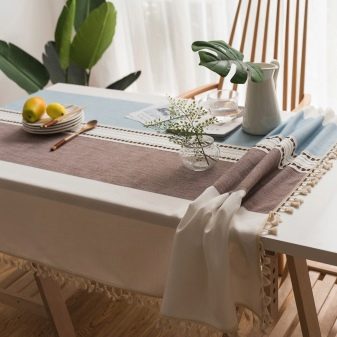
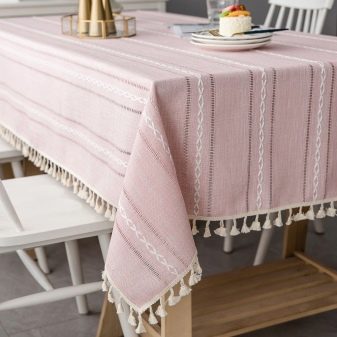
Linen tablecloths also have some disadvantages.
- Dull colors. Among the assortment you will not find table linen with contrasting "flashy" shades.
- Natural linen shrinks during the first wash. This feature must be taken into account when choosing a size.
- Consumers consider quick creasing and laborious ironing to be a significant disadvantage. To get rid of deep wrinkles, you cannot do without the steaming mode.
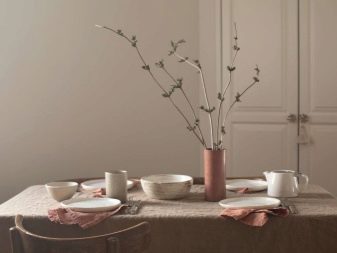
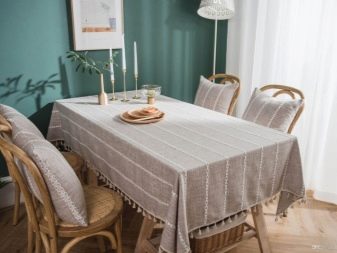
Design
Linen tablecloths are made in various discreet shades: beige, white, blue, pink, orange and others. Manufacturers offer not only plain models for daily use, but also original festive table linen. It is decorated with guipure lace, embroidery, hemstitching, decorated with ribbons, rhinestones or bows.

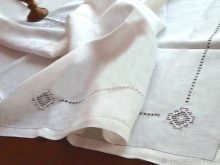
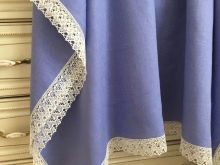
The tablecloth can be printed or embroidered: angels, floral arrangements, butterflies, patterns and other images. Exquisite elegant table linen will be appropriate for a festive table setting - it will not only successfully fit into a festive atmosphere, but also tell guests about the good aesthetic taste of the hosts.
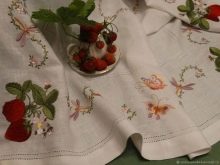
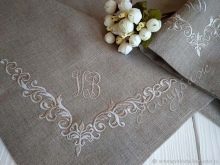
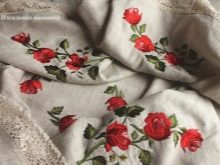
Manufacturers
Linen tablecloths are produced by the largest European and domestic textile factories. Table textiles of Belarusian and Russian production are more popular.
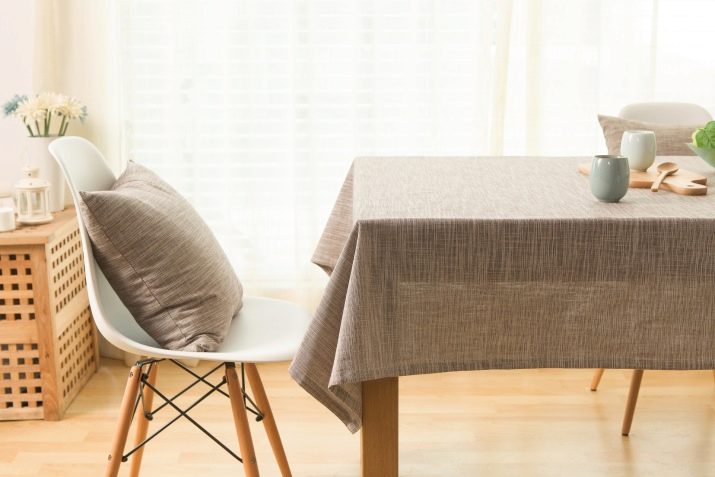
Here are the names of several large companies from Russia and Belarus that produce high-quality linen fabrics:
- Orsha Linen Mill;
- Yakovlevskaya Linen Manufactory;
- Vologda Flax Mill;
- "Belarusian flax";
- "Argnord" and others.
Factories produce certified goods. Their assortment includes linen table textiles of small, medium and large sizes, sets including tablecloths and napkins.
On sale there are both budget solutions and premium-class products made of jacquard linen (price from 4 thousand rubles).
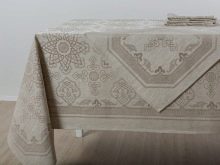
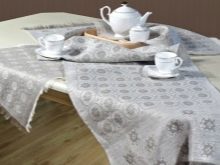
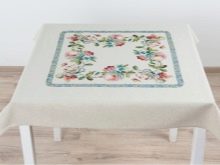
How to choose?
When choosing a tablecloth, first of all, you need to be guided by the size of the table: table linen should hang from the edges by 20-30 cm. In order not to be mistaken, you need to take measurements before buying textiles.
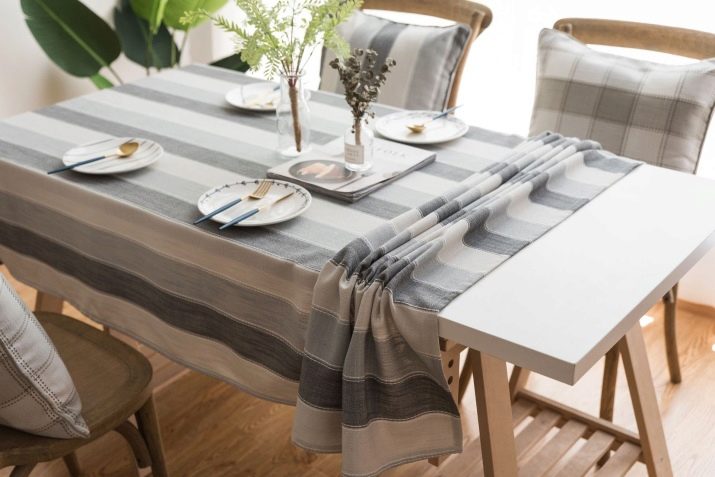
The choice of product design depends on its purpose. For everyday use, it is recommended to give preference to practical beige, gray and other neutral shades. In order not to visually "overload" the interior, it is important to choose the right color scheme.
The most successful option is a combination of the color of the tablecloth with a shade of curtains or wall decoration.
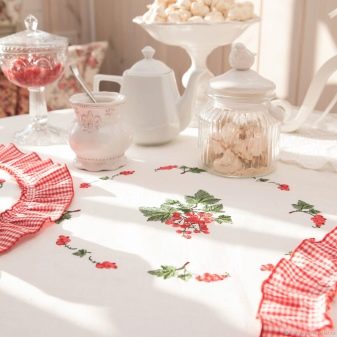
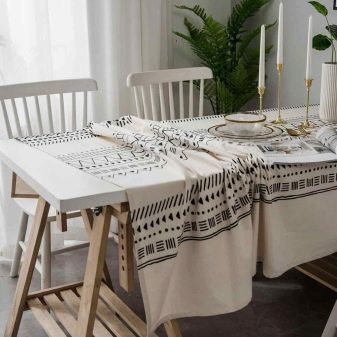
For everyday use, a good solution would be to choose linen for the kitchen made of linen with a special dirt and water-repellent impregnation. It does not take much time and effort to take care of such products.
For the holidays, you can choose solutions with decor or snow-white tablecloths. Against this background, serving items and dishes will look advantageous.
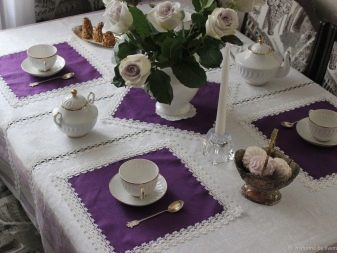
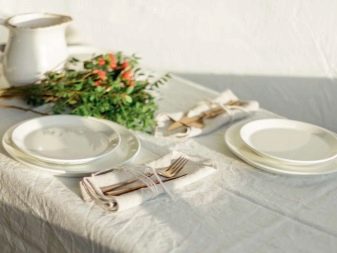
Care Tips
Proper care of linen textiles is a guarantee of long-term preservation of both appearance and consumer characteristics.
Washing
You can wash linen fabrics either manually or in an automatic machine. In the first case, it is recommended to pre-soak the textiles in soapy water. If stains are to be removed, it is advisable to use an oxygen stain remover.
Do not rub the tablecloth too much - after such actions it will be harder to smooth it out.
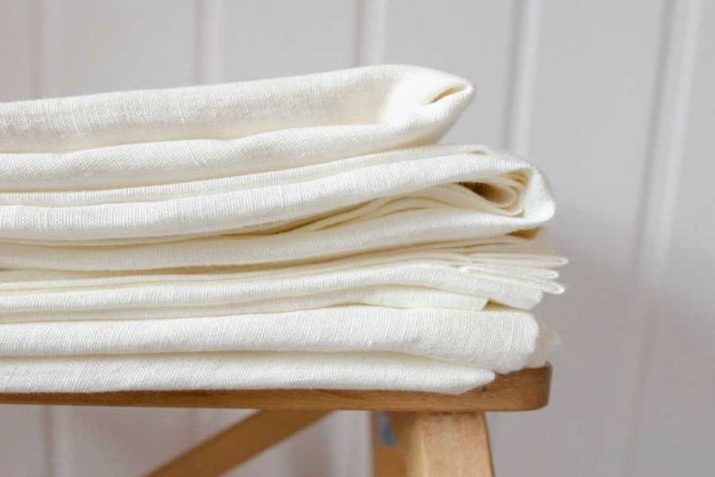
When washing with a machine, you need to choose the optimal temperature (30-40 degrees) and a mode for delicate fabrics. It is recommended to wring out the tablecloth at the lowest speed or to refuse automatic wringing altogether.
Regardless of the washing method, you need to choose the right product. Do not use powders with chemically aggressive substances, for example, chlorine-containing components. Baby powders or liquid powders are good choices.

Drying and ironing
Dry the washed textiles horizontally in a well-ventilated area or outdoors. Direct sunlight is permissible on plain colored canvases.

When ironing, the linen tablecloth should be slightly damp - this way you will be able to smooth out sweets and creases faster and easier. The temperature can be any, but it is desirable that the iron does not heat up over 200 degrees. Ironing the product is allowed only from the wrong side. You can use a steamer.
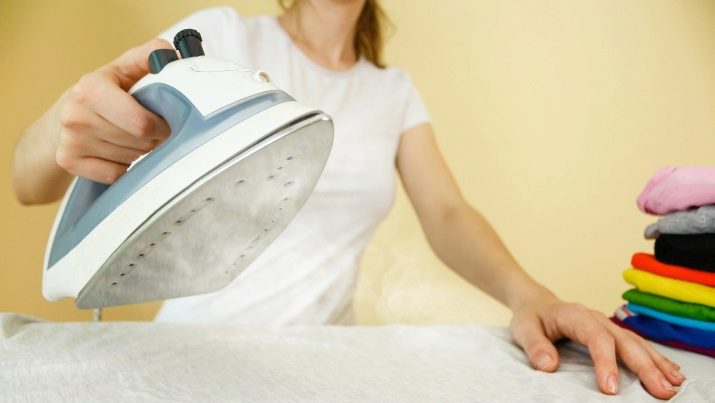
You need to store linen tablecloths in a closet on a separate shelf at low air humidity. Subject to these rules, table linen will decorate your everyday or festive table for more than one year.
